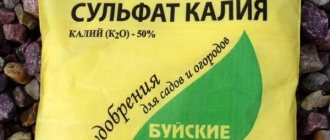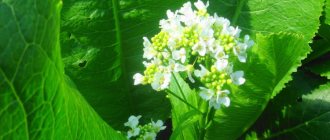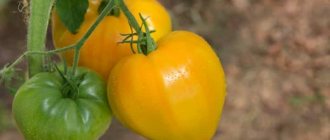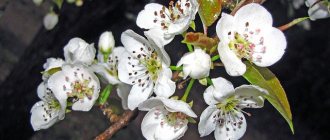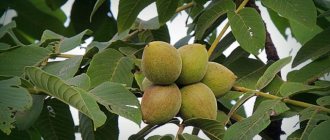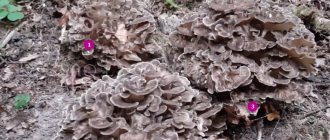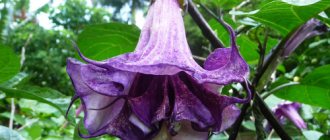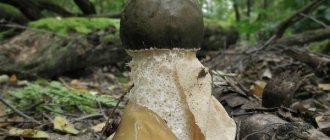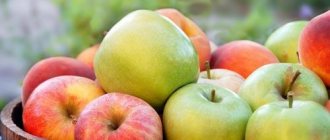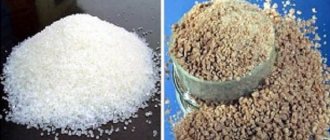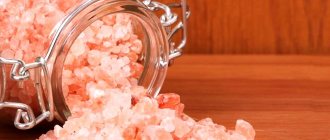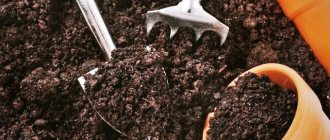What it is?
Potassium sulfate (another name is potassium sulfate ) is a highly effective potassium fertilizer that is used for rapid plant growth and high-quality fruit development.
The fertilizer contains trace elements of potassium (45-50%) and sulfur (17%). The percentage composition is as follows:
- 50% potassium oxide,
- 17% sulfur,
- 3% magnesium
- 0.4% calcium.
Formula: K2SO4.
The fertilizer is produced and sold in polyethylene packages containing white granules. Standard package weight is 900 grams.
The use of potassium sulfate in the garden can bring the following
benefits :
- Increase the resistance of plants to various diseases, including such dangerous ones as damage to fruits by gray rot.
- It will help perennial plants survive the winter favorably and recover effectively in the spring.
- Increase the productivity of fruit trees and berry bushes.
- By improving water circulation in the cellular space of plants, it will help to quickly develop a strong root system, transport micronutrients from the rhizome to the above-ground part and provide high-quality greens.
- Increase the number and quality of shoots.
For gardeners, the following advantages of potassium sulfate :
- The drug is budget-friendly, but very effective - the case when the quality far exceeds the price.
- It's easy to use.
- It is safe for human health (in minimal doses).
- Despite the fact that it is a chemical substance, the drug is not flammable and can be safely transported without fear of fire.
Receipt[edit | edit code]
Mineral forms of pure potassium sulfate are relatively rare. The mineral Arcanite consists of pure K2SO4, is white or transparent crystals, found in California (USA).
There are many minerals containing potassium salts:
- Cainite – MgSO4 KCl H2O
- Glaserite – 2K2SO4 Na2SO4
- Schonite – K2SO4 MgSO4 6H2O
- Leonite – K2SO4 MgSO4 4H2O
- Langbeinite - K2SO4 2MgSO4
- Polyhalite – K2SO4 MgSO4 2CaSO4 2H2O
- Syngenite – K2SO4 CaSO4 H2O
Industrial production methods are based on exchange reactions of KCl with various sulfates and as a result, potassium sulfate is usually heavily contaminated with by-products:
2 KC l + 2 M g SO 4 ⇄ K 2 SO 4 ⋅ M g SO 4 + M g C l 2 {\displaystyle {\mathsf {2KCl+2MgSO_{4}\rightleftarrows K_{2}SO_{4}\cdot MgSO_{4}+MgCl_{2}}}} K 2 SO 4 ⋅ M g SO 4 + 2 KC l ⇄ 2 K 2 SO 4 + M g C l 2 {\displaystyle {\mathsf {K_{2}SO_{ 4}\cdot MgSO_{4}+2KCl\rightleftarrows 2K_{2}SO_{4}+MgCl_{2}}}} 2 KC l + N a 2 SO 4 ⇄ K 2 SO 4 + 2 N a C l {\ displaystyle {\mathsf {2KCl+Na_{2}SO_{4}\rightleftarrows K_{2}SO_{4}+2NaCl))} 2 KC l + C a SO 4 ⋅ 2 H 2 O ⇄ K 2 SO 4 + C a C l 2 + 2 H 2 O {\displaystyle {\mathsf {2KCl+CaSO_{4}\cdot 2H_{2}O\rightleftarrows K_{2}SO_{4}+CaCl_{2}+2H_{2}O }}} 2 KC l + F e SO 4 ⇄ K 2 SO 4 + F e C l 2 {\displaystyle {\mathsf {2KCl+FeSO_{4}\rightleftarrows K_{2}SO_{4}+FeCl_{2} }}}
The purest product is obtained by treating solid potassium chloride with concentrated sulfuric acid:
2 KC l + H 2 SO 4 → > 100 o CK 2 SO 4 + 2 HC l ↑ {\displaystyle {\mathsf {2KCl+H_{2}SO_{4}{\xrightarrow {>100^{o}C} }K_{2}SO_{4}+2HCl\uparrow }}}
Calcination of the langbeinite mineral with coal:
K 2 SO 4 ⋅ 2 M g SO 4 + 2 C → > TK 2 SO 4 + 2 M g ↓ + 2 CO 2 ↑ + 2 SO 2 ↑ {\displaystyle {\mathsf {K_{2}SO_{4}\ cdot 2MgSO_{4}+2C{\xrightarrow {>T}}K_{2}SO_{4}+2Mg\downarrow +2CO_{2}\uparrow +2SO_{2}\uparrow }}}
The following methods are used in laboratory practice:
- from potassium oxide:
K 2 O + H 2 SO 4 → K 2 SO 4 + H 2 O {\displaystyle {\mathsf {K_{2}O+H_{2}SO_{4}{\xrightarrow {}}K_{2}SO_{ 4}+H_{2}O}}}
- displacement from weak or unstable acids:
K 2 CO 3 + H 2 SO 4 → K 2 SO 4 + CO 2 ↑ + H 2 O {\displaystyle {\mathsf {K_{2}CO_{3}+H_{2}SO_{4}{\xrightarrow { }}K_{2}SO_{4}+CO_{2}\uparrow +H_{2}O}}}
- from alkali and dilute acid:
2 KOH + H 2 SO 4 → K 2 SO 4 + 2 H 2 O {\displaystyle {\mathsf {2KOH+H_{2}SO_{4}{\xrightarrow {}}K_{2}SO_{4}+2H_ {2}O}}}
- from potassium hydrogen sulfate:
2 KHSO 4 → 240 o CK 2 SO 4 + H 2 SO 4 {\displaystyle {\mathsf {2KHSO_{4}{\xrightarrow {240^{o}C}}K_{2}SO_{4}+H_{2 }SO_{4}}}} KHSO 4 + KOH → K 2 SO 4 + H 2 O {\displaystyle {\mathsf {KHSO_{4}+KOH{\xrightarrow {}}K_{2}SO_{4}+H_ {2}O}}} 2 KHSO 4 + KC l → 500 o CK 2 SO 4 + HC l ↑ {\displaystyle {\mathsf {2KHSO_{4}+KCl{\xrightarrow {500^{o}C}}K_ {2}SO_{4}+HCl\uparrow }}}
- oxidation of potassium sulfide:
K 2 S + 2 O 2 → > 500 o CK 2 SO 4 {\displaystyle {\mathsf {K_{2}S+2O_{2}{\xrightarrow {>500^{o}C}}K_{2}SO_ {4}}}}
- from potassium superoxide:
2 KO 2 + S → 140 o CK 2 SO 4 {\displaystyle {\mathsf {2KO_{2}+S{\xrightarrow {140^{o}C}}K_{2}SO_{4}}}} 2 KO 2 + SO 2 → 100 o CK 2 SO 4 + O 2 ↑ {\displaystyle {\mathsf {2KO_{2}+SO_{2}\xrightarrow {100^{o}C} K_{2}SO_{4}+ O_{2}\uparrow }}}
Potassium sulfate is obtained by heating potassium sulfite to a temperature of 600 °C:
4 K 2 SO 3 → 600 o CK 2 S + 3 K 2 SO 4 {\displaystyle {\mathsf {4K_{2}SO_{3}{\xrightarrow {600^{o}C}}K_{2}S+ 3K_{2}SO_{4}}}}
Oxidation of sulfur with potassium bichromate:
K 2 C r 2 O 7 + S → 800 − 1000 o CC r 2 O 3 + K 2 SO 4 {\displaystyle {\mathsf {K_{2}Cr_{2}O_{7}+S{\xrightarrow {800 -1000^{o}C}}\ Cr_{2}O_{3}+K_{2}SO_{4}}}}
Reaction between ammonium sulfate and potassium hydroxide:
( NH 4 ) 2 SO 4 + 2 KOH → K 2 SO 4 + 2 NH 3 ↑ + 2 H 2 O {\displaystyle {\mathsf {(NH_{4})_{2}SO_{4}+2KOH\rightarrow K_{2}SO_{4}+2NH_{3}\uparrow +2H_{2}O}}}
Instructions for use
Potassium sulfate can be used in the garden in several ways, each of which has its own application characteristics.
Dry use
Applying fertilizer in the fall in the form of uniform scattering of colorless crystals on the soil along with digging up the ground before winter.
This method of application is also possible in early spring, before planting seedlings. During digging, the fertilizer should be applied approximately to the depth where the main root mass of the plants will then be concentrated. These measures help normalize the soil acid-base balance.
Such manipulations with the soil are recommended to be carried out annually, since during the period of growth and fruiting, plants draw all useful substances from the soil.
When distributing potassium sulfate, it is necessary to wear gloves, avoiding contact with mucous membranes and eyes (if contact occurs, it can cause irritation).
Liquid dilution for irrigation
An aqueous solution of potassium sulfate is used during the growing season (growth of the green mass of the plant).
This method is more effective, since crystals diluted in the form of a liquid will penetrate more quickly to the roots of the plant. It is necessary to water crops with the solution directly at the root.
Physical properties[edit | edit code]
Colorless crystals, rhombic system ( a
= 0.742 nm,
b
= 1.001 nm,
c
= 0.573 nm, Z = 4, space group Pnam).
At temperatures above 584 °C it transforms into a hexagonal modification ( a
= 0.5947 nm,
c
= 0.8375 nm, Z = 2, space group P63/mmc).
It is highly soluble in water and does not undergo hydrolysis. Insoluble in concentrated alkali solutions or pure ethanol.
The taste is bitter and salty[1].
For which crops is it suitable?
Feeding plants such as:
- sunflower;
- all types of legumes (since they need a large amount of sulfur to bear fruit);
- Cruciferous vegetables: sugar beets, carrots, turnips, cabbage
- potatoes, fragrant tobacco and citrus fruits (these are plants that react strongly to the presence of Cl);
- strawberry;
- cucumbers;
- tomatoes;
- eggplant;
- peppers,
- fruit trees and berry bushes.
Chemical properties[edit | edit code]
How the salt of a dibasic acid forms acid salts:
K 2 SO 4 + H 2 SO 4 ⇄ 2 KHSO 4 {\displaystyle {\mathsf {K_{2}SO_{4}+H_{2}SO_{4}\rightleftarrows 2KHSO_{4}}}}
How do all sulfates interact with soluble barium compounds:
K 2 SO 4 + B a C l 2 → 2 KC l + B a SO 4 ↓ {\displaystyle {\mathsf {K_{2}SO_{4}+BaCl_{2}{\xrightarrow {}}2KCl+BaSO_{ 4}\downarrow }}}
Reduced to sulfide:
K 2 SO 4 + 4 H 2 → 600 o C , F e 2 O 3 K 2 S + 4 H 2 O {\displaystyle {\mathsf {K_{2}SO_{4}+4H_{2}{\xrightarrow { 600^{o}C,Fe_{2}O_{3}}}K_{2}S+4H_{2}O}}} K 2 SO 4 + 4 C → 900 o CK 2 S + 4 CO ↑ {\ displaystyle {\mathsf {K_{2}SO_{4}+4C\xrightarrow {900^{o}C} K_{2}S+4CO\uparrow }}}
Forms pyrosulfate with sulfur oxide:
K 2 SO 4 + SO 3 → K 2 S 2 O 7 {\displaystyle {\mathsf {K_{2}SO_{4}+SO_{3}{\xrightarrow {}}K_{2}S_{2}O_{ 7}}}}
Signs of potassium deficiency in plants
Potassium deficiency is a serious problem that provokes a delay in further growth and development of inflorescences (and, as a result, the inability to bear fruit). This problem can lead to the death of the plant, so it is important to recognize and neutralize the problem in time.
Typically, a deficiency of this element can be observed in sandy, peaty or floodplain soils.
This is expressed in the form of coloring of plant leaves in a dull, green-bluish color, sometimes a bronze tint can be observed. Next, yellowing and the formation of brown spots along the edges of the leaves occurs - the so-called “marginal burn”.
Subsequently, the edges of the leaves curl into a tube, and wrinkling can be observed on the remaining area of the leaf. Most often, such signs of potassium deficiency begin to appear mainly on the lower leaves.
How to understand that it is time for the plant to introduce fertilizing in the form of potassium sulfate:
- the growth of the green mass of the plant has slowed down;
- the leaves began to turn yellow at the edges and did not grow to their standard sizes;
- flower buds do not open, dry out and fall off;
- fruiting is slow or completely absent;
- Ripe fruits are poorly stored and their taste has deteriorated.
If you notice any of these symptoms, do not waste time and immediately start feeding the plants.
Please note that you can overdo it with fertilizing!
Signs that plants have too much fertilizer :
- chlorosis may appear on the leaves - a disease in which there is a decrease in green chlorophyll in the leaves;
- the density of the leaves themselves is reduced;
- shoot necrosis is observed;
- the length of internodes at the stem decreases;
- The roots of the plant become sick and rot.
How to store: safety precautions
The method of storing potassium sulfate is in a dry room at a temperature no higher than 20 degrees, in a tightly closed container (or a tied bag) so that moisture does not penetrate.
The bag should not come into contact with food, drinks or medications.
The fertilizer does not stick together or cake over time - if you put it in storage for the winter, in the spring you will find the same crumbly granules.
The maximum storage duration without loss of quality is several seasons.
Since the storage period is still limited, you should not buy the largest package. If you have a small summer cottage, it is optimal to buy small bags for one-time use - then the issue of preserving the fertilizer will disappear.
Keep the packaging out of the reach of children and pets! Since it is a chemical compound, ingestion by children and animals may cause dangerous reactions!
It would be ideal to store the drug in a dry place, in a cabinet with a lock that children will not be able to open.
Security measures:
- While working with the drug, you should absolutely not eat, drink, or smoke – the substance should not enter the body.
- It will be optimal to work with rubber gloves and a respirator.
- If the drug gets into your eyes, rinse immediately with plenty of fresh, clean water.
- In case of contact with skin, rinse with running water.
- If the drug accidentally enters the respiratory tract, ensure a free flow of oxygen into the lungs.
- If granules are ingested, gastric lavage and activated carbon intake are indicated at the rate of 1 tablet per 10 kg of person’s weight.
